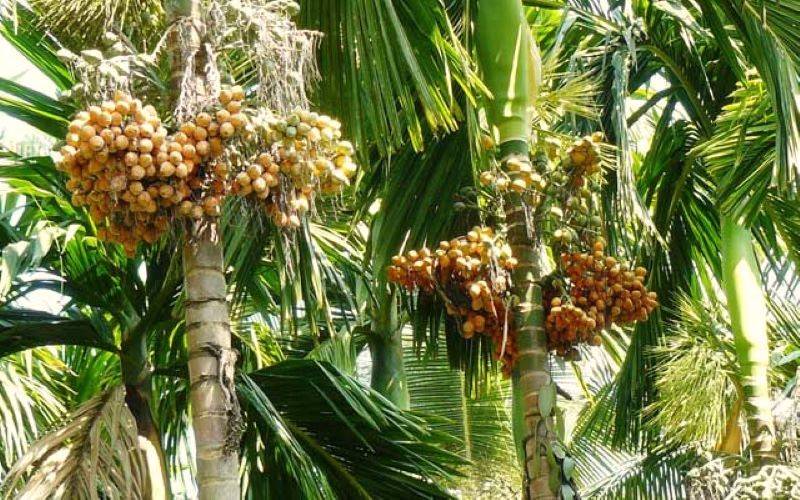
The area under arecanut cultivation in Karnataka increased from 2.79 lakh hectares to 5.49 lakh hectares between 2017 and 2021. According to the Directorate of Arecanut and Spices Development and the Arecanut Research and Development Foundation, the area of cultivation in the country increased from 5.05 lakh ha in 2017-18 to 7.93 lakh ha in 2020-21.
"Cultivation is increasing, particularly in plateau and dry land areas," says A Kishore Kumar Kodgi, president of the Central Arecanut and Cocoa Marketing and Processing Co-operative Limited (Campco). While farmers point to a favourable market price, the exponential growth coincides with environmental concerns.
Farmers say they are digging borewells 1,200 to 1600 feet deep in non-traditional arecanut areas to get water for irrigation. When compared to food crops, arecanut growers currently have a higher profit margin.
"The availability of irrigation facilities prompted farmers to go for areca," says Devaraj Reddy, a hydrogeologist from Chitradurga. In comparison to other crops traditionally grown here, maintenance is also simple. Non-farmers have also begun to purchase land for arecanut cultivation. Droughts, on the other hand, have been a drag.
According to Reddy, several plantations in Chitradurga and Kadur failed as a result of the 2016-17 drought. "An acre of arecanut land is supposed to have four acres of kushki (rain-dependent) land. This allows rainwater to percolate and raises the water table. Unfortunately, kushki land has been converted into plantations in recent years," he says.
Farmers in Tumakuru have begun felling tamarind trees in order to plant arecanut saplings, according to H J Padmaraju. "Main food crops, particularly ragi, paddy, and vegetables, are underutilized. However, we cannot blame farmers because they must also worry about their livelihoods," he says.
"The expansion may cause a mismatch between supply and demand. We don't know if the market can absorb the increase in production," says N Prakash Kammaradi, former chairman of the Agricultural Prices Commission. This impact, while not immediate, could be a source of concern in the future, according to Mahesh Puchchappady, general secretary of the All-India Areca Growers' Association.
"If the consumption of arecanut increases and value addition is improved, it would help in maintaining some stability in the market. The government should also provide support price for such products," he adds. To mitigate any potential impact, Campco is encouraging growers to cultivate medicinal plants as intercrops.
















